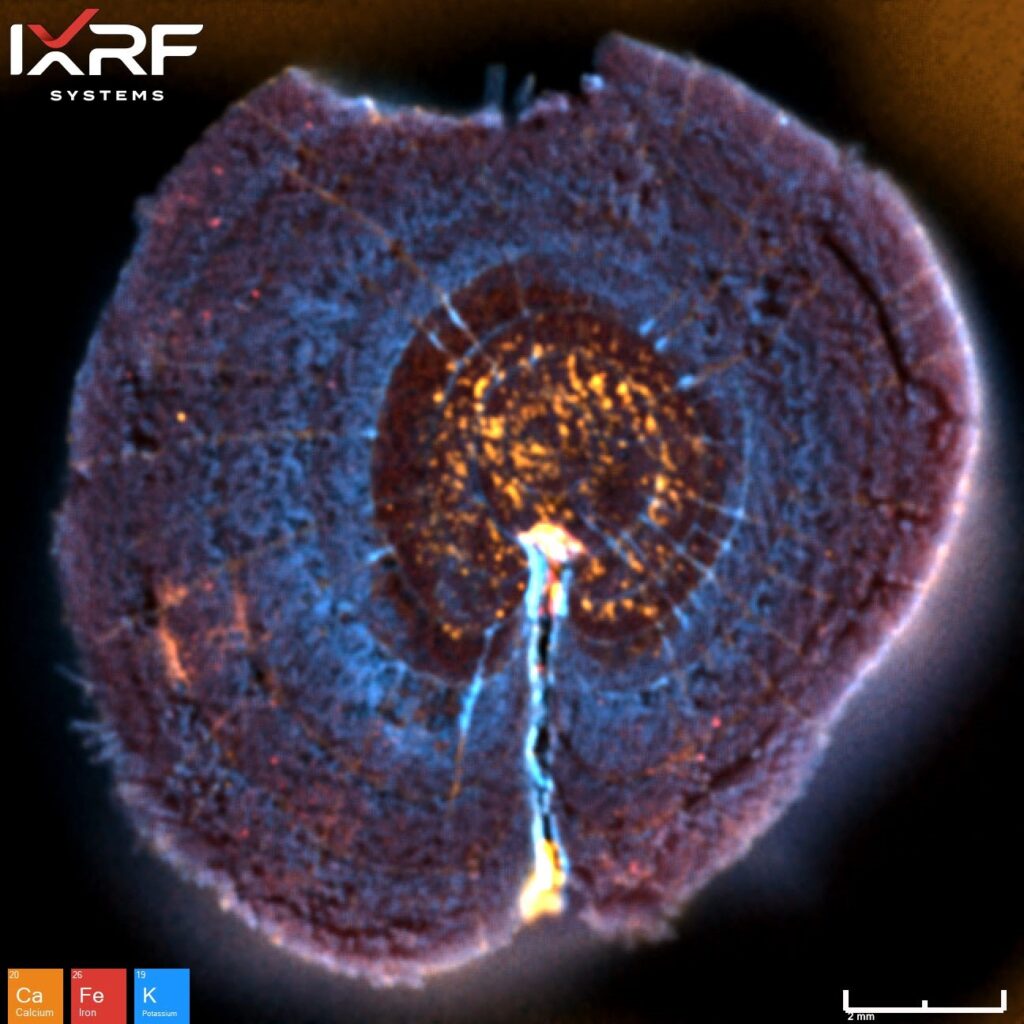At IXRF Systems, we are committed to making a difference in scientific research and industrial processes. The role of X-ray fluorescence (XRF) technology cannot be understated when it comes to material analysis, including the study of plant species like Sage Brush (Artemisia tridentata). Sage Brush is more than just a common shrub; it plays a crucial role in ecosystems and has been studied for its medicinal properties. Utilizing micro X-ray fluorescence (µXRF) technology to study Sage Brush with high spatial resolutions can offer unprecedented insights into its elemental composition and, by extension, its role in ecosystems and potential uses in medicine.
In this article, we will discuss how µXRF instruments like the Atlas M with high spatial resolution using an X-ray spot size as small as 5 µm can be applied in the study of Sage Brush and what sort of information it can yield.
What is Sage Brush?
Sage Brush is a woody shrub that is native to North America and plays a vital role in semi-arid regions. It is an important part of the ecosystem, providing shelter and food for a variety of species. Moreover, Sage Brush has been traditionally used for its medicinal properties, primarily its anti-inflammatory and antimicrobial capabilities.

Big sagebrush (Artemisia tridentata) leaves. Photo: K.McCutcheon
The Importance of High Spatial Resolution
In µXRF analysis, spatial resolution is paramount. High spatial resolution allows for a more granular analysis of samples, isolating specific microscopic regions of interest within the Sage Brush leaves or stems. This enables researchers to focus on elemental compositions in highly localized areas, offering insights into nutrient distribution, uptake mechanisms, and potential concentration of medicinal compounds within the plant.
The IXRF Systems’ µXRF Solution
The Atlas series µXRF instruments achieve spatial resolutions at micron levels, facilitating detailed mapping and quantitative analysis. With advanced optics and modern detectors, our systems measure elements from carbon to uranium, providing a thorough elemental assessment of Sage Brush samples.
Figure 1: MicroXRF mapping of sage brush revealing detailed elemental distributions for phosphorus, sulfur, potassium, calcium, iron, nickel, tungsten, and platinum. Maps were collected using a 5 μm spot and pixel size on the Atlas M.
Step-by-step Process
- Sample Preparation: Samples of Sage Brush are prepared by isolating specific portions like leaves, stems, or roots. These are then mounted onto slides or holders suitable for µXRF analysis.
- Data Acquisition: Utilizing high spatial resolution settings, the sample is scanned. This produces an elemental map showing the distribution of various elements within the sample.
- Data Analysis: The collected data is processed using sophisticated software tools that offer features like spectral analysis, quantitative X-ray mapping, phase analysis, particle analysis, and morphology.
- Result Interpretation: The elemental maps are analyzed to draw conclusions regarding nutrient distribution, bioaccumulation of harmful elements, and localization of potentially medicinal compounds within Sage Brush.
Figure 2: Multiple µXRF maps overlayed to display the contrast of elements.
Conclusion
Analyzing Sage Brush with high spatial resolution µXRF provides data useful for both ecological and medicinal research. Using IXRF Systems’ technology, researchers can access detailed and precise information. This analysis of Sage Brush contributes to understanding its role in sustainability and health.
Explore Further with High Spatial Resolution MicroXRF
Curious about the detailed insights high spatial resolution microXRF can offer in botanical and material analysis? It’s more than just numbers; it’s about understanding the elemental composition on a micro-level. If you’re serious about enhancing your research capabilities, IXRF Systems is here to help. Click here to contact us today to get a deeper understanding of how our technology can be a valuable addition to your analytical toolkit.
IXRF Systems
Bringing Clarity to Complexity
IXRF Systems is a leading provider of X-ray fluorescence instrumentation. With our advanced analytical solutions, we are committed to supporting research, quality control, and educational endeavors across various industries.



